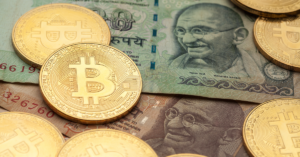As 2021 wound down, The Exchange wanted to dig into what might happen if the startup music stopped playing. So we got veteran venture capitalist Matt Murphy on the phone to talk it over.
Murphy started his career at Sun Microsystems back in the mid-90s, joining venture shop Kleiner Perkins in 1999, where he stayed until 2015. From there, the investor changed teams to Menlo Ventures, where he’s worked since. For a little bit of context, Murphy has invested in DocuSign, Egnyte, AppDynamics and Carta, among others.
The Exchange explores startups, markets and money.
Read it every morning on TC+ or get The Exchange newsletter every Saturday.
But most relevant today is his experience investing during downturns, including both the 2000-era startup contraction and the 2008 financial crisis. So, armed with a grip of questions and a recorder, we talked through a host of topics, from current startup benchmarks to the durability of today’s startups and changes to the overall startup hit rate.
 Our chat with Murphy was wide-ranging. To manage its length, we’ve sectioned his answers by theme, adding subheadlines in places where the topic changed slightly. We’ve also edited our questions down sharply and made modest edits to the transcript for clarity and length, including expanding certain acronyms.
Our chat with Murphy was wide-ranging. To manage its length, we’ve sectioned his answers by theme, adding subheadlines in places where the topic changed slightly. We’ve also edited our questions down sharply and made modest edits to the transcript for clarity and length, including expanding certain acronyms.
Enjoy your snow-day read!
On whether the current period is overheated or backed by fundamentals
Matt Murphy: Well, I’m very OK with the investments I’ve already made being marked up, because that makes you feel like a hero, and very traumatized by trying to get into new stuff, because that makes you feel like a chump. [Laughter]
[But yes,] the way that valuations have changed and continue to change in a relatively short period of time has been astonishing. Definitely more so than in 1999. It just feels like this has been more of a durable period. It’s more distributed, and every time you think it’s a new max, something else happens.









